
[122] Egretta garzetta, Little Egret
Introduction
Egretta garzetta, the Little Egret, is a bird in the Heron family – a smaller, all white relative of the Grey Heron. It is very new to Britain but now common enough to be called just an Egret locally.
Taxonomy
Kingdom – Animals
Phylum – Chordates
Class – Aves (Birds)
Order – Pelecaniformes
Family – Ardeidae
Genus – Egretta
Scientific Name – Egretta garzetta
Name
The word egret is an old word for this bird (or other egrets) coming from Old French aigrette, a diminutive of aigron, so it is ultimately cognate with heron. Garzetta is the Italian name for the Little Egret.
Description
Egretta garzetta has a black bill, long black legs and yellow feet but is otherwise all white. Apart from its colour it is very similar to [034] the Grey Heron, but distinctly smaller.

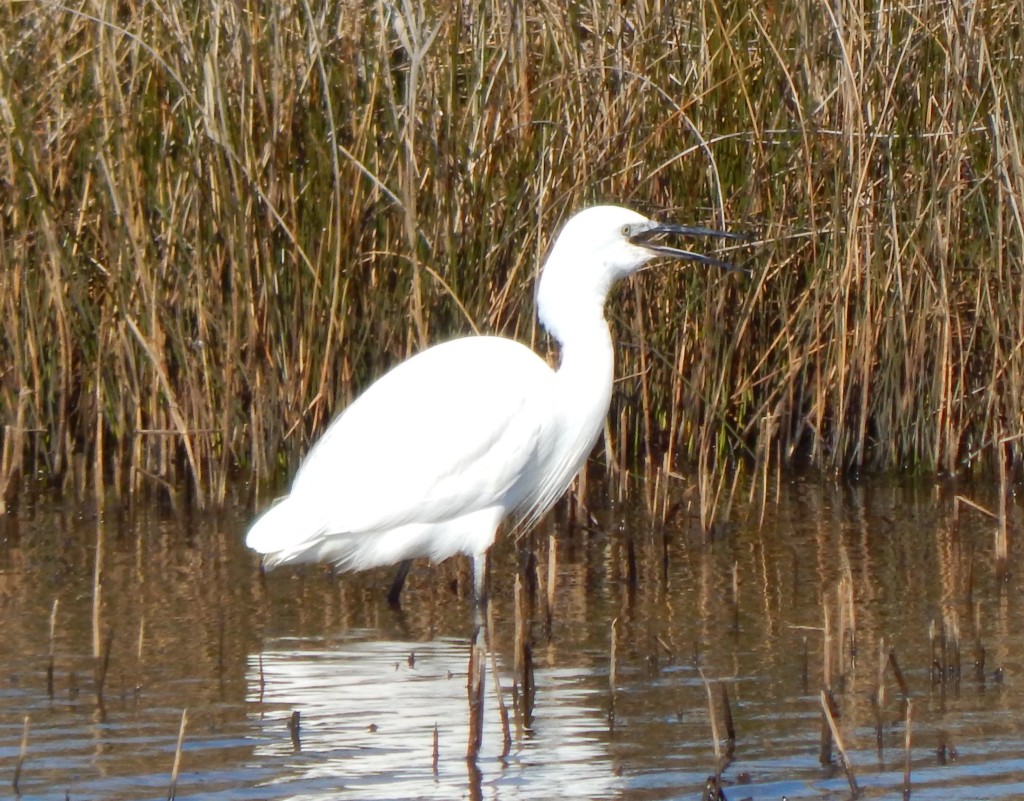
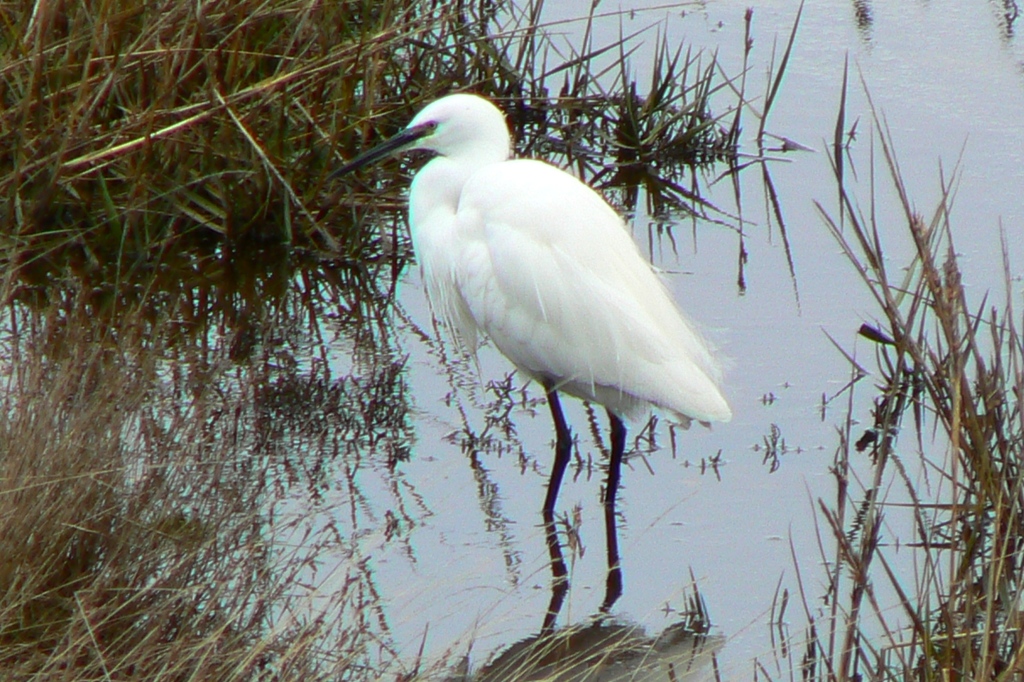

It wades in shallow water and catches fish in the same way as a heron. In general, the two birds are similar but the Egret is more gregarious and can be seen in small groups. They nest in colonies, often with other similar species.
Here are some pictures to show its size relative to the Grey Heron and some other birds.


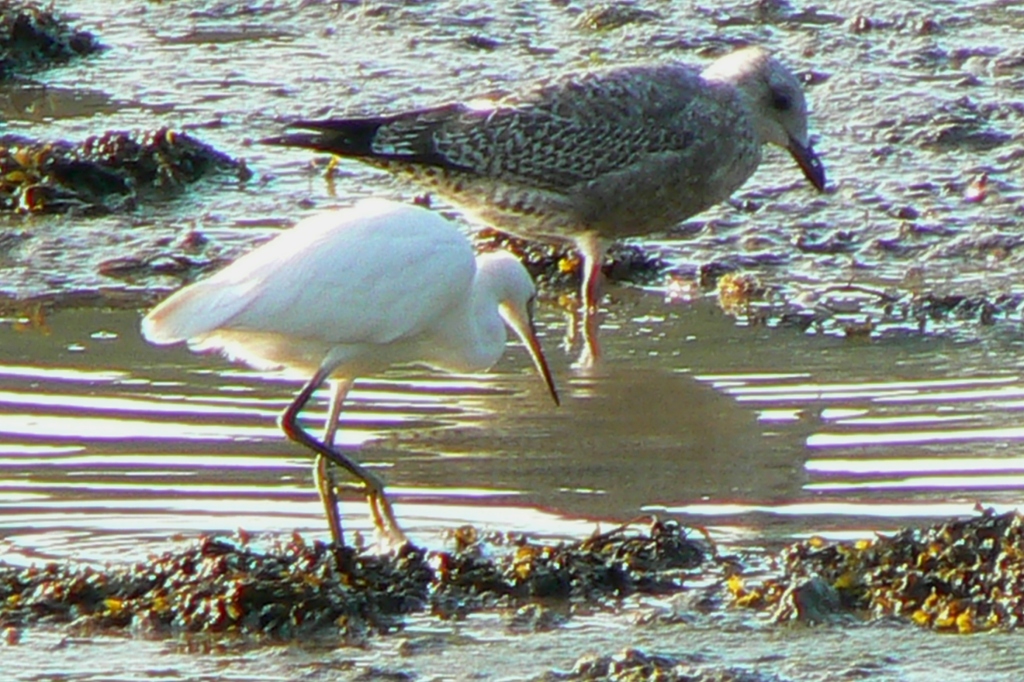
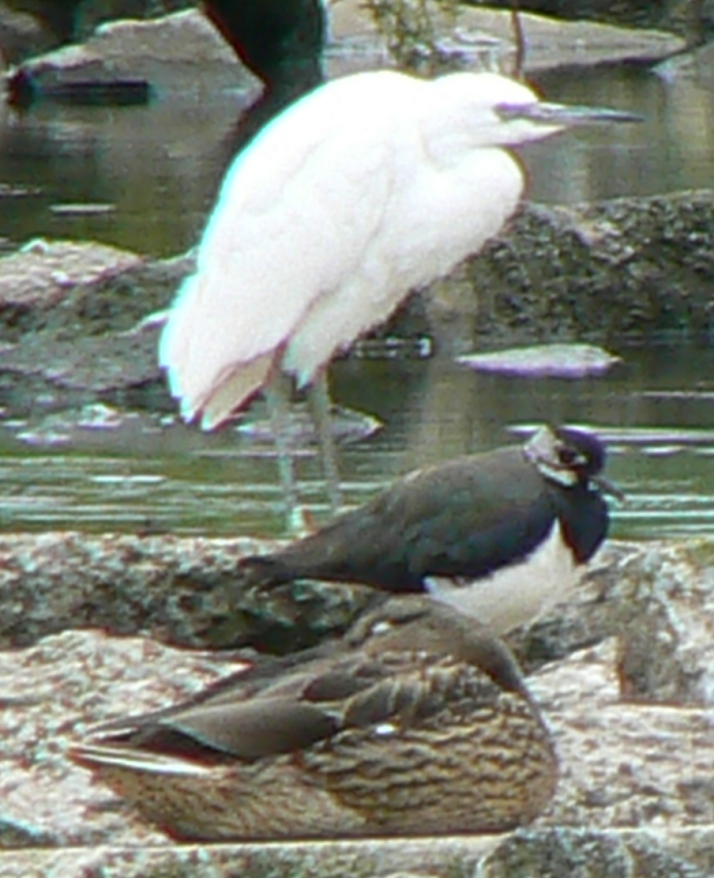
The first gull is a [196] Lesser Black-backed Gull and the next one is a juvenile – so it is either Lesser Black-backed or a [195] Herring Gull. The last picture shows a [354] Lapwing and a [023] Mallard
Habitat and Use
The main native range of this bird is sub-Saharan Africa, tropical Asia and Australia, where they are resident, and other areas as summer or winter visitors.
The Little Egret has an interesting history in England. They were probably common in Britain and Ireland in Mediaeval times and were eaten at the feast at the coronation of King Henry VI in 1429, but became scarce and disappeared from Britain. This was caused by over-hunting together with the colder climates of the Sixteenth to Nineteenth Centuries. They faced a similar decline in Europe, where they were extensively farmed for their feathers.
Then, from about the 1950s they began to reappear in Southern France and gradually further North, arriving in the south of England around the turn of the Twenty-first Century. Probably helped by global warming, they have spread and are now fairly common and widespread throughout England and Wales as breeding residents. In many places Egrets are more common than Herons.
Other Notes
My impression is that the Little Egret is now more often seen than the Grey Heron in wilder wetland environments, but not yet so evident in more urban areas such as ornamental lakes. Our local park often has a heron but I have only seen an egret there once. This is it:
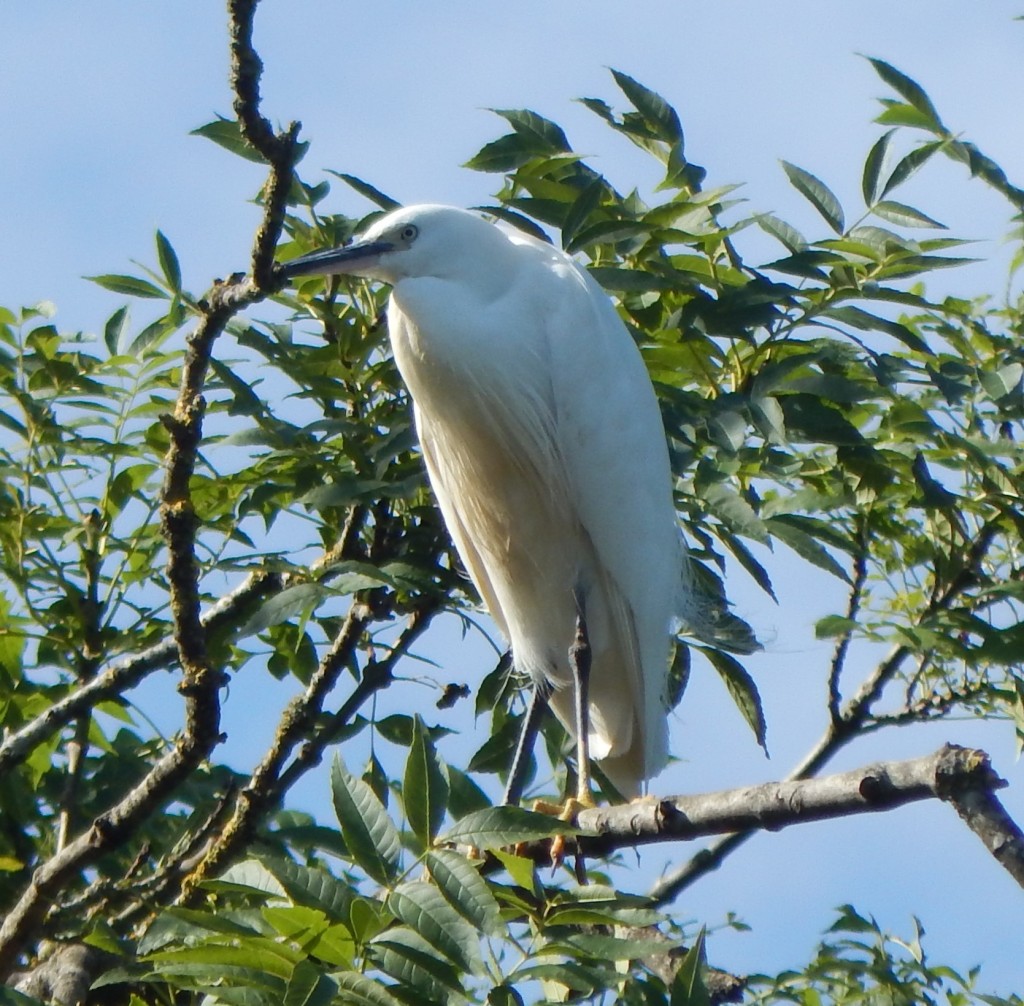

See also
Here are some other relatively rare birds from the Heron/ Egret family.
- Ardea alba, the Great White Egret. Its bill is yellow and the feet are black and it is significantly larger than a Grey Heron. It used to be a very occasional vagrant visitor in England but is gradually becoming more common and has started to breed in some locations.
- Bubulcis ibis, the Cattle Egret. Even smaller than a Little Egret with a bright orange bill, it lives mainly on insects disturbed by cattle and other large grazing animals – still limited mainly to tropical Africa and Asia, but occasionally seen as a vagrant visitor to England.
- Botaurus stellaris, the Eurasian Bittern, from the Bittern subfamily of the Herons. They have mottled brown plumage and have a habit of walking very slowly with their bills pointing upwards, in a way that provides effective camouflage in reedbeds. It was until recently almost extinct in Britain. At first as a winter visitor it has returned to significant populations in a few areas.

In 1887 one London dealer sold over two million egret skins.
